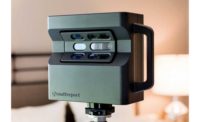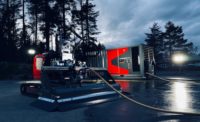Putting more sensors on a jobsite can tell you a lot about temperature, humidity, noise and vibration, but doing something useful with that data can be a daunting task.
“There are a lot of sensors out there, a lot of companies pitching their targeted solution,” says Mark Bryant, chief information officer for PCL Construction. “But we were looking at it and said we didn’t want to have to go to 15 different platforms to get the information we need.”
Frustrated by the fragmented jobsite-sensor market, Bryant took matters into his own hands, sketching out an idea for a sensor analytics platform back in 2017. Eighteen months later, PCL has deployed its Job Site Insights platform on five major project sites, with more on the way. The system, based on Microsoft Azure cloud technology, ingests the readings from the hundreds or thousands of sensors on a jobsite, and blends it with traditional data sets like scheduling and financial data. The result is real-time reporting on conditions at the site, with the ability to generate alerts if something isn’t quite right.
“The idea is to let everyone know what’s happening on the site,” says Bryant. “We partnered with Microsoft when they showed interest in what we were doing. It uses some of their spatial intelligence and digital twin technology, but our work sits on top of the Microsoft stack.”
Bryant has already found real results in the field. PCL is general contractor on the 66-story Stantec Tower, which at 823 ft will be the tallest building in Edmonton, Alberta, when completed. Sensors that can monitor temperature and humidity are installed on the upper floors, and Job Site Insights can spot problems a human observer might not notice. “In this 60-story tower the top 20 floors are residential units, and we have sensors in all of those units,” explains Bryant. “The sensors speak to the local gateway, which sends to the internet, where we apply analytics and machine learning to that.” Microsoft’s Spatial Intelligence software can then send out alerts if it sees a pattern in temperature or humidity that might indicate a flaw in the building’s envelope. “Millwork can have problems, drywall can crack if the temperature and humidity are not optimal,” says Bryant. “We used to send out a person on an ad hoc basis to check those suites individually. Now we can monitor 24/7, reducing manual labor and warranty claims.”
Unlike some other sensor platforms, PCL’s platform isn’t married to any particular brand or type of sensor. The system is designed to be hardware agnostic, allowing the integration of broader IoT tracking concepts, including remote tracking of building material and workers. “We got a pilot job at the Los Angeles Airport where we are tracking worker movements for safety reasons,” says Bryant. Another pilot site has sensors monitoring for VOCs and air quality.
“PCL’s enablement of Job Site Insights and Analytics added a significant boost to our efforts at improving the information visibility on the very large capital projects at LAX,” says Frank Peters, BIM program manager at Los Angeles World Airport. “They brought the latest technology and helped guide a dashboard implementation that was head-and-shoulders above what was currently in place.”
“I think we are creating a new category, rather than more point solutions,” says Bryant. “With this we can monitor it all in our own cloud environment.”





-copy_ENRready.jpg?height=200&t=1660150075&width=200)
